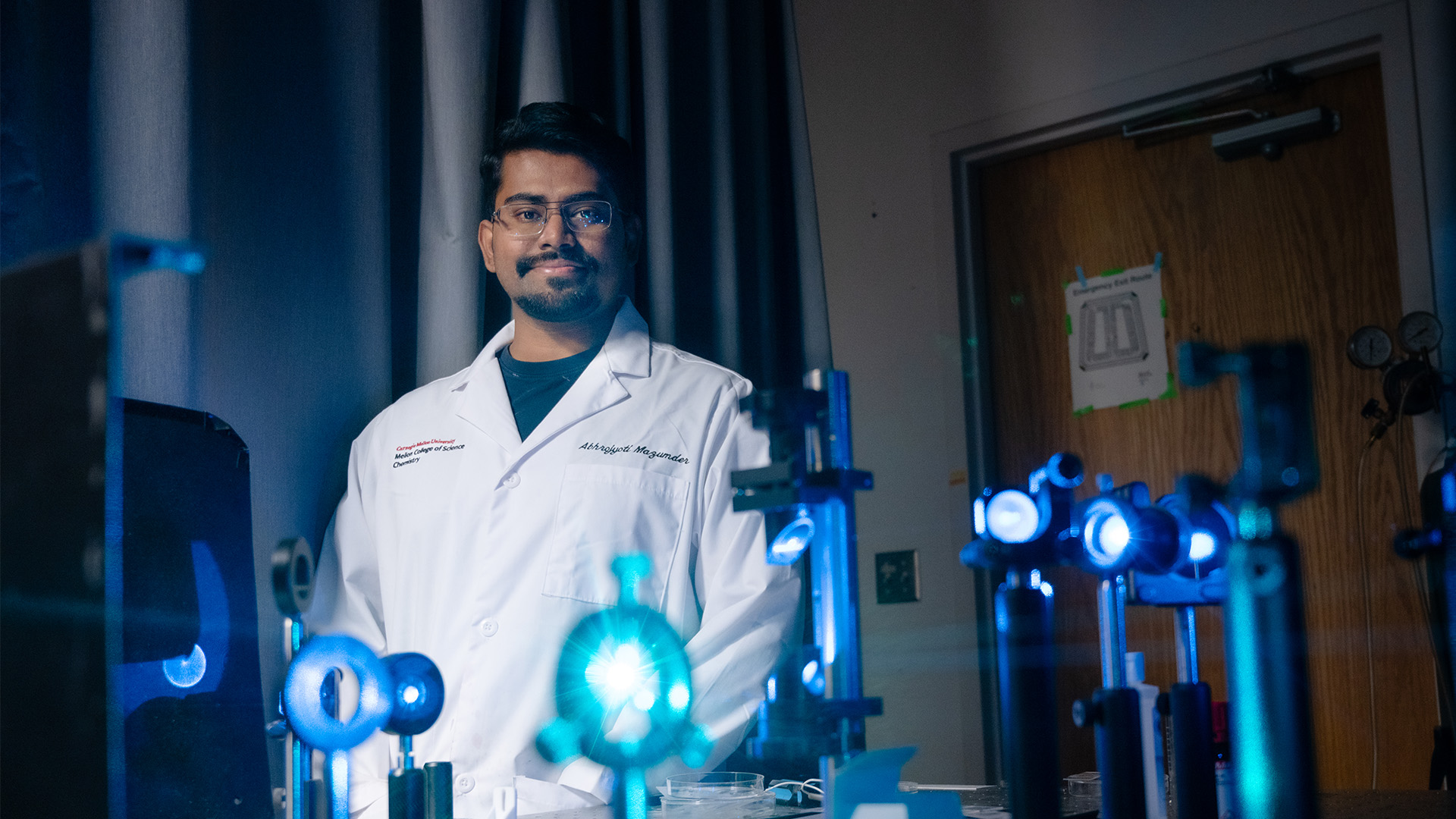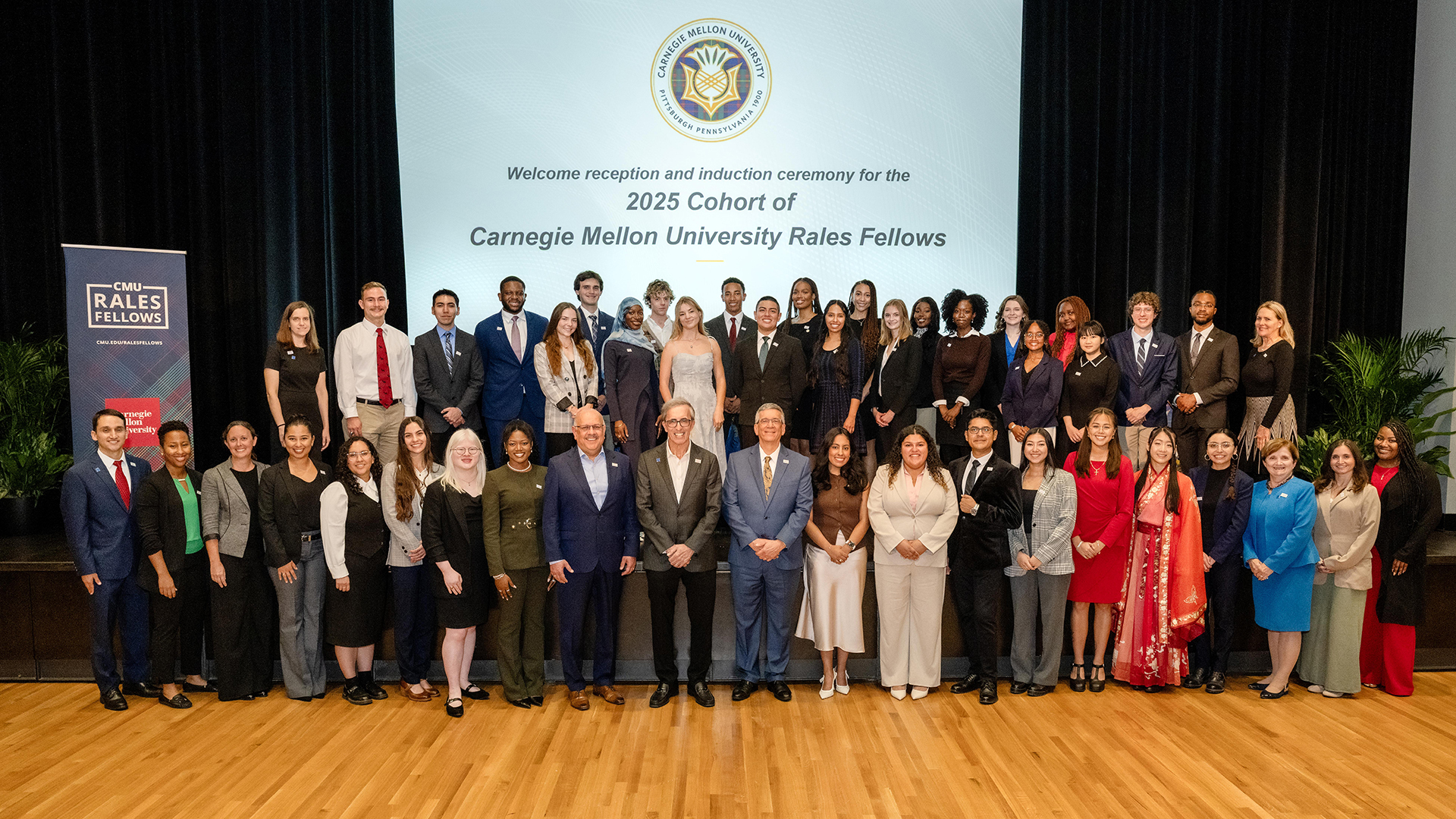

In This Section
Thread By Thread, Lin Rethinks the Fabric of Material Design
By Kirsten Heuring Email Kirsten Heuring
- Associate Dean of Marketing and Communications, MCS
- Email opdyke@andrew.cmu.edu
- Phone 412-268-9982
Polymers are everywhere. They give tires their toughness, make plasticware lightweight and durable and lend nylon clothes their stretch and strength. Tina Lin is designing new ways to build and customize these materials at the molecular level.
“Polymers are like threads, and polymer networks are a bunch of those strands that are locked together to form a fabric,” said Lin, a Ph.D. student in Carnegie Mellon University’s Department of Chemistry. “When they’re all woven together, they have different properties. I want to see what would happen to the behavior of the cloth if each strand didn't just have two ends — but more.”
Lin uses computational models and lab experiments to see how individual strands present in polymer networks — can be rearranged for different properties. By adjusting the methods she uses to bind the network together, she can create materials with nearly identical chemical compositions but different potential uses.
Lin achieves this by changing components known as initiators and crosslinkers. Initiators start the polymerization process, and crosslinkers allow the polymer chains to stick together. By altering how the initiator and crosslinkers are connected, Lin influences how the materials behave, even though they have the same basic parts.
If Lin can characterize the ways that polymer networks are formed, researchers will be able to design a range of materials from a single monomer. This means faster development, lower costs and more sustainable production.
“I’d really like to provide information on how formulations can be changed,” Lin said. “The question is always: how do we get better performance without losing out on other favorable properties? I’m hoping what I’m doing will shed some light on how chemists can change the intrinsic structure of materials.”
Lin works with Krzysztof Matyjaszewski, J.C. Warner University Professor of Natural Sciences, who discovered a polymer synthetic method known as atom transfer radical polymerization (ATRP), which is commonly used in polymer production today. Matyjaszewski said Lin’s research has novel applications.
“Tina attacks the most challenging problems,” Matyjaszewski said. “She is very accurate and precise in her research.”
In addition to her research, Lin plays a vital leadership role in the lab and to the wider graduate student community. She manages operations in the Matyjaszewski group of 17 researchers. She is also a member of the Graduate Student Assembly.
“Tina cares very much about safety in our lab of 12 graduate students and 5 postdocs,” Matyjaszewski said. “Everybody respects her, witnessing how much she cares about others. She is a role model and exemplary citizen of our chemistry department.”
For her efforts, Lin earned the McWilliams Fellowship, which supports two graduate students per year conducting cutting-edge research.
“I’m super excited,” Lin said. “I want chemists to have more control over the kinds of materials we use and what we’re making, and we’re always looking to improve the technology.
